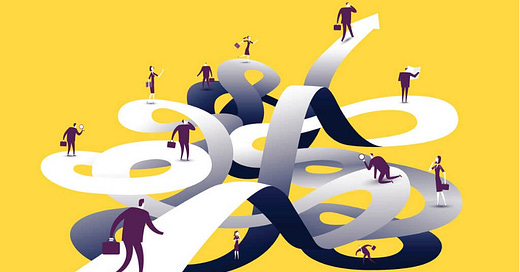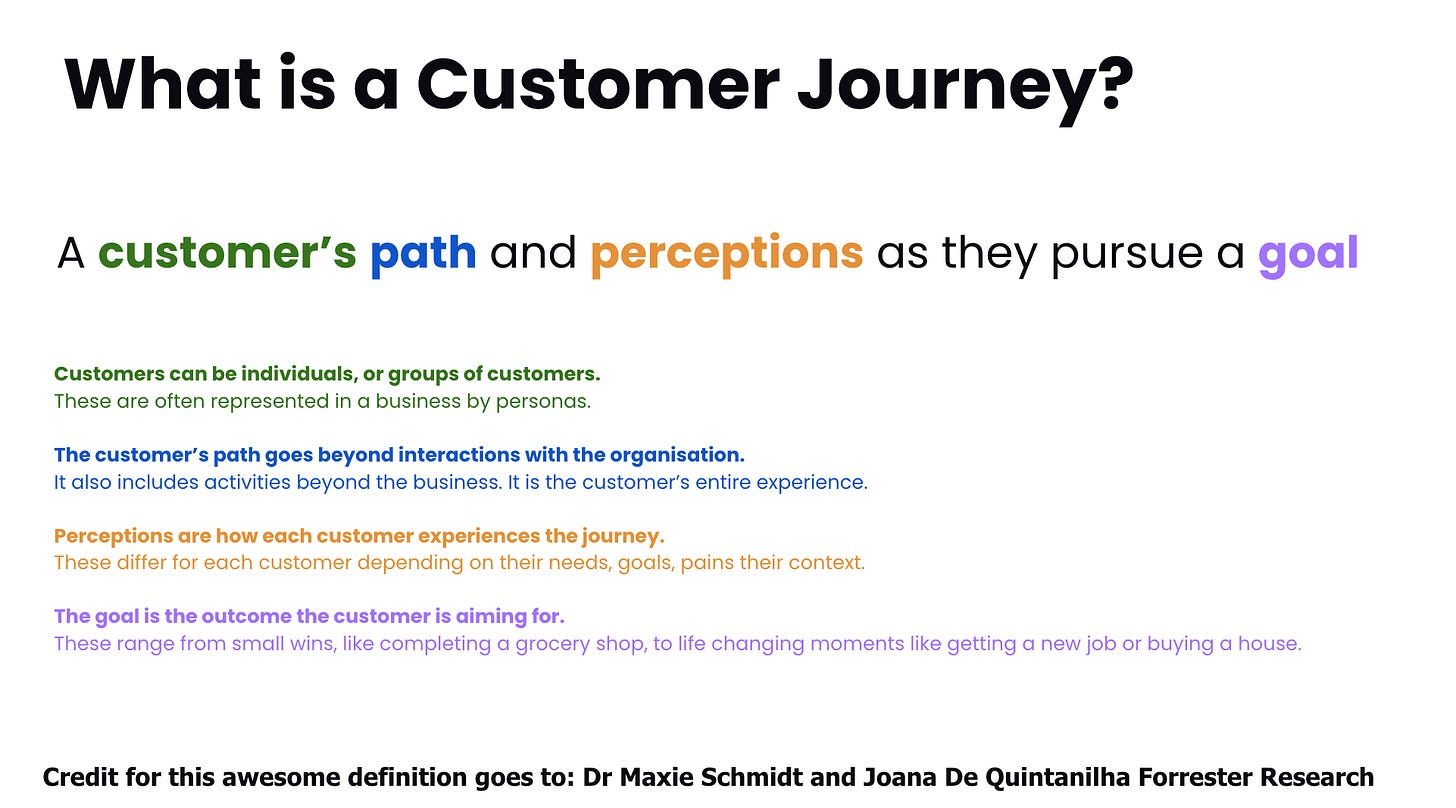Journey Management provides a view of the customer experience at different levels
Create a holistic, customer-first map of even the most complex organisations, from large corporations, to city halls to government departments.
How many customer journeys make up your organisation?
Is it 10, 100, 1000 or more? Is it hard to even guess?
This is a difficult question to answer... and up up until recently the ability to fully map an organisation to get a definitive answer has been a herculean task and pretty much an impossibility for complex organisations like large corporations, city halls or government departments.
Customer insight works on many levels, from a top level overview to detailed technical interactions, so there are
One of the most powerful features of journey management is a framework to help businesses break down these levels, so you can map an entire organisation and understand the organisation at each of these levels.
Here’s how it works…
What is a customer Journey?
As a starting point, it’s useful to level set on what we mean by a customer Journey.
Viewing the customer experience at several zoom levels
It’s similar to Google Earth… you can view a point on the planet at different zoom levels and you get different context. Each is useful for it’s own purpose.
The whole earth view gives a holistic view of how our planet fits in the universe.
The Europe view shows how our position relates to other countries. This could be useful for planning a holiday or understanding flight times.
The city view shows how major cities relate. This would be useful for planning a city break.
The street view shows us what our immediate surroundings look like and how we relate to our neighbours.
We can do the same for customer Journeys
This provide a comprehensive view of the customer experience across complex organisations.
A holistic overview, such as a Customer Lifecycle: Shows the entire customer’s experience across an organisation on one diagram, at a high level.
Macro journeys: A journey for each important goal that your customers aim to complete that are supported, or could potentially be supported, by your organisation.
Micro journeys: Journeys for smaller tasks and interactions that are a step towards a goal. Several of these journeys together will lead to a successful Macro Journey.
Process journeys: Technical interactions that support steps for the customer. These journeys focus on the process within your application or service supported by technology. These can be quite small and detailed steps, like a signup form. And we can overlay the business interactions over these journeys to form a service blueprint.
Here’s an example
A bank has a host of services for their customers. One of these is securing a mortgage on a house. This basically allows people to find their home. In terms of life impact, it’s a hugely important activity for a customer.
This is a step in the bank’s customer lifecycle and lives at this top level alongside, opening a bank account, getting life insurance and investing savings.
An example Macro journey is securing a mortgage in principle
For a customer this is an important job to complete. It is a big relief to complete this step because you know exactly which houses you are able to afford and can target your search.
An example Micro journey is providing proof of income.
Collecting proof of your earnings over several years. This is quite a large task and most of this is completed outside of the banks systems.
An example process step is sending these documents to the bank.
This is actually backed up by systems in the bank’s control.
This could be a website upload or an email or even by post, and there will be processes and systems for the customer and the bank.
The power of a customer journey framework
For me, as a customer experience consultant, applying this framework has been a revelation!
This provides a framework for even the most complicated organisations, such as large corporations, city halls or government departments, to create a customer centred map across an organisation.
Incremental development of the Journey Hierarchy
To get started, start small and build incrementally towards develop the holistic picture of your organisation:
Select the highest priority area, current challenges where customer insight will add the most value. And fill in this area of the Journey Hierarchy to identify and solve customer challenges in this small part.
Create an over-arching holistic framework, so you can see the entire picture on one page and the gaps that needed to be filled
Then move onto the next area, incrementally building a map of your business as you solve issues.
Over time, you will build a comprehensive linked map of your organisation from the customer perspective.
2nd and 3rd order customer insights
As your teams map customer journeys at different levels, and the detail and accuracy of customer journeys mature, you can bring together insights across teams, departments and the whole company which provides 2nd and 3rd order insights.
This is where the value increases dramatically. This allows leadership to:
Assess and prioritise opportunities across the business
See how changes in one journey impact upstream and downstream processes
Direct CX work to the highest value challenges
Measure the holistic impact of CX work across teams
In summary
A journey hierarchy helps even complex businesses like large corporations, city halls or government departments to iteratively map their entire customer experience
Viewing the customer journey at different zoom levels provides relevant insights to different stakeholders in the organisation, from leadership to team leads to delivery teams on the ground.
Businesses can realise 2nd and 3rd order insights as customer insights are linked across teams, departments and the business.







